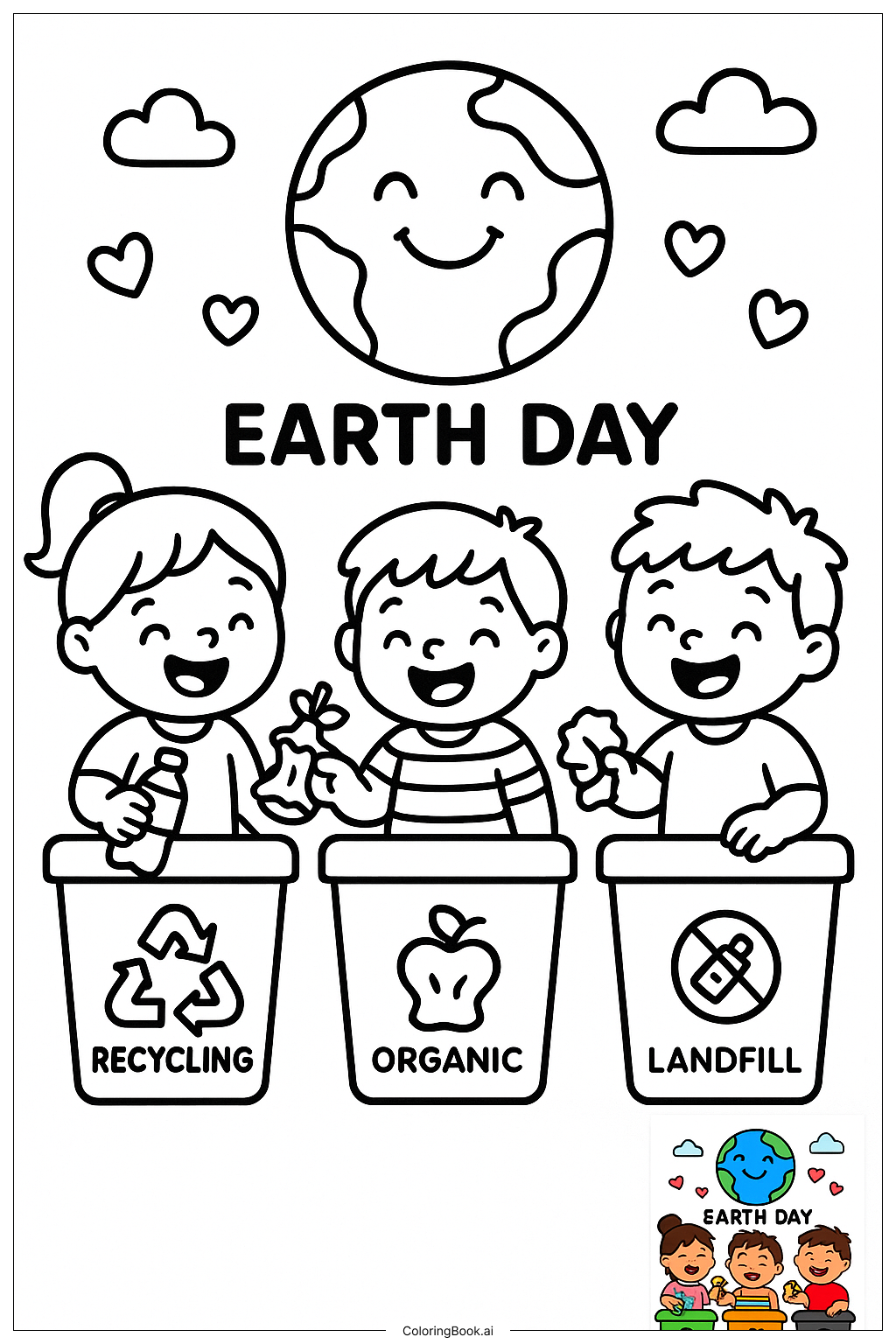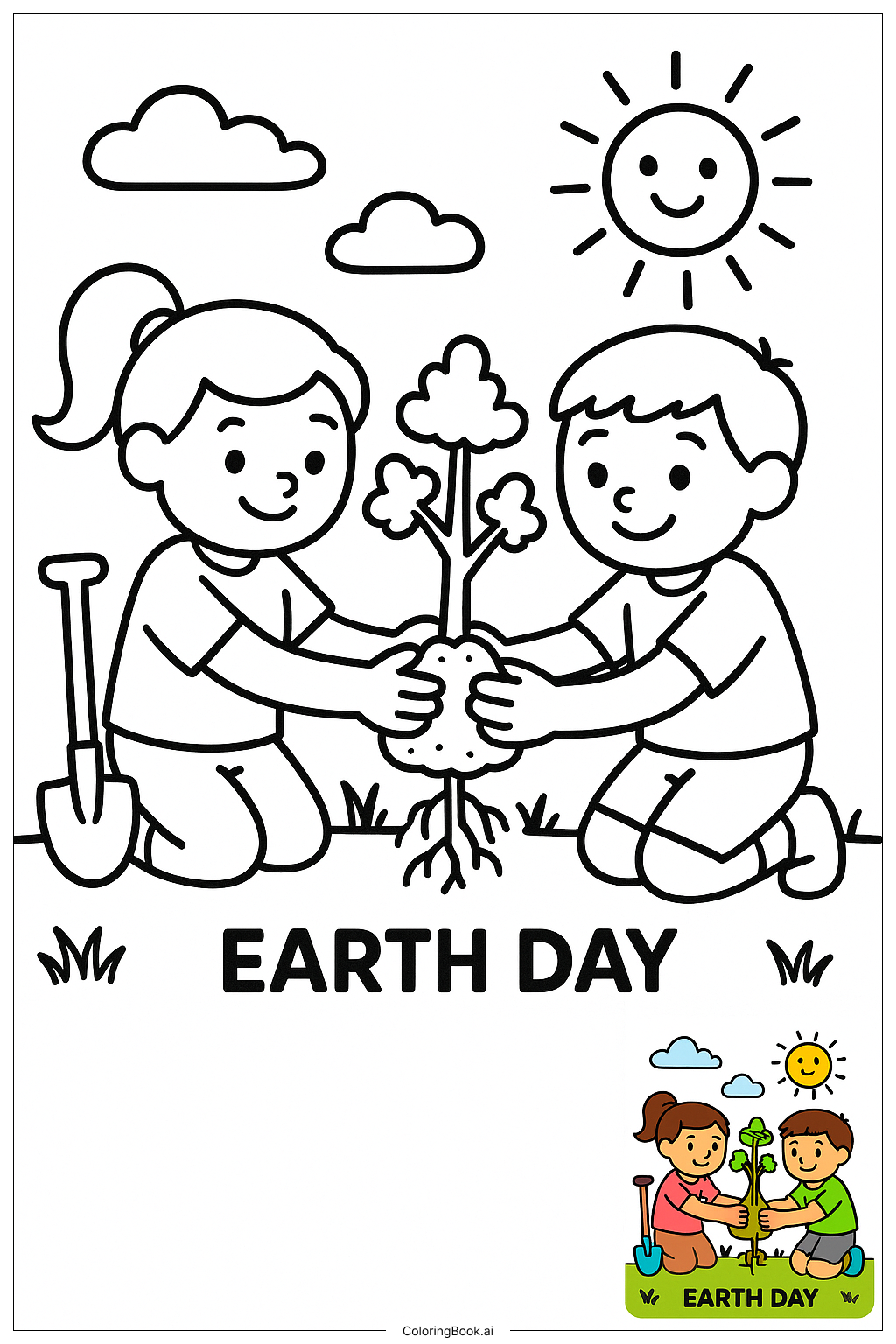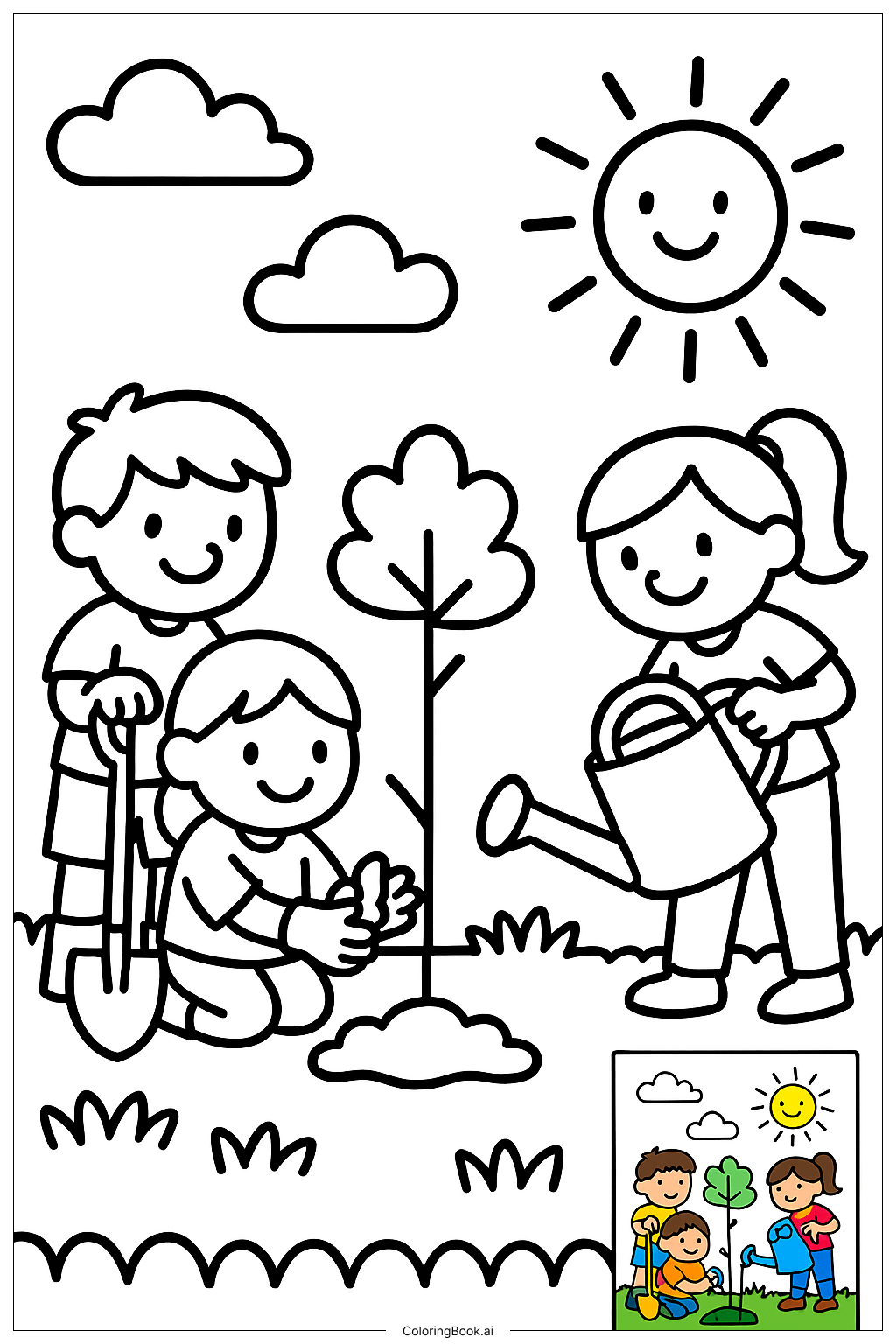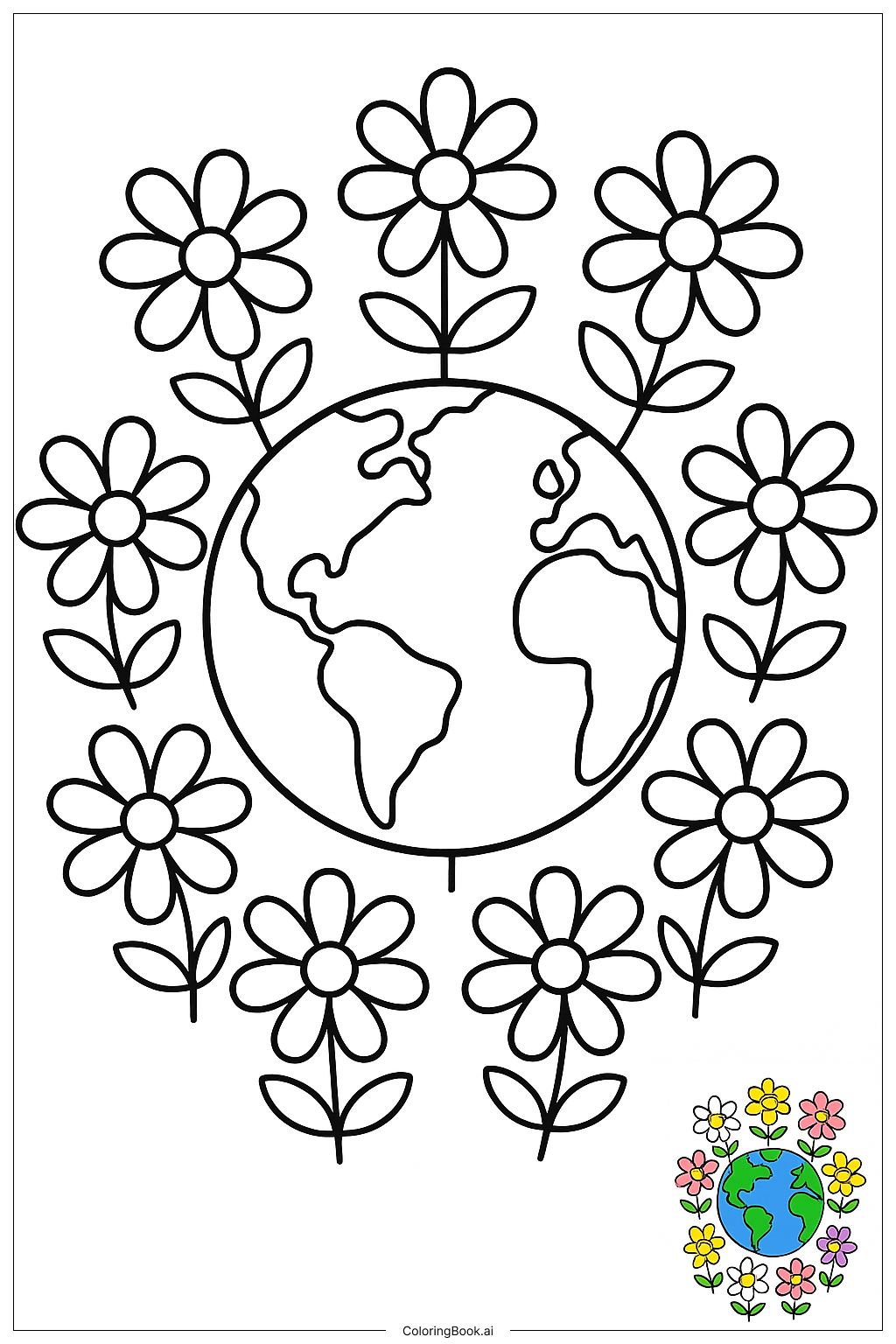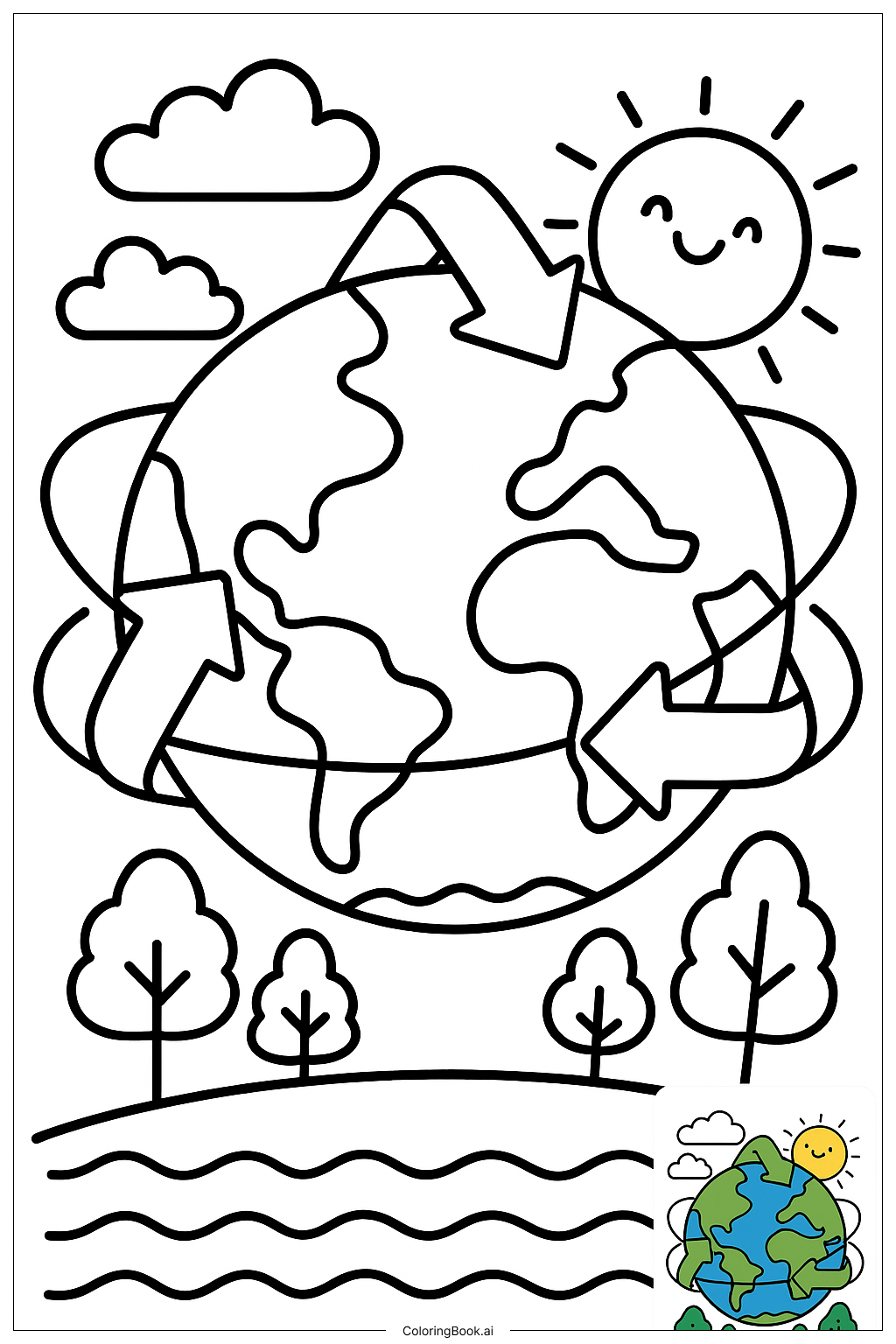Coloring tips: How to color Earth Day Kids Sorting Trash coloring page well?
For the Recycling bin, use shades of blue and green to represent eco-friendliness. The Organic bin can be colored in earthy tones like brown and green, symbolizing nature. For the Landfill bin, gray or black can represent non-recyclable waste. Encourage kids to create colorful clothes for the children and vibrant backgrounds with bright colors. They can also use shades of light blue for the sky and different colors for the hearts and clouds, allowing for creativity while learning about environmental responsibility.
Coloring challenges: Which parts are difficult to color and need attention for Earth Day Kids Sorting Trash coloring page?
1. Recognizing Colors: Children may struggle to identify which colors represent recycling, organic materials, and landfill waste. Teaching them color association can help. 2. Staying Inside Lines: Younger kids might have difficulty keeping within the lines, which might affect the neatness of their work. Practice will help them improve this skill. 3. Color Choices: Some children might have difficulty choosing colors that represent the intended themes, like earthy tones for organic waste. 4. Complex Shapes: The items the children hold may have intricate details, making it harder to color them smoothly. Focusing on larger areas first can help build confidence.
Benefits of coloring books: Advantages of drawing Earth Day Kids Sorting Trash coloring page
Coloring this page has many benefits for children. It enhances fine motor skills as they practice using crayons or markers. It also encourages creativity, allowing them to choose their own colors. Engaging in coloring gives kids a sense of accomplishment and can help them learn about environmental awareness and waste sorting. This fun activity promotes relaxation and focus, helping them develop patience and attention to detail. As they color, they reinforce the importance of recycling, composting, and responsible waste disposal.
